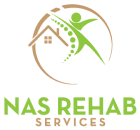Neurological Conditions
Amyotrophic Lateral Sclerosis
Alzheimer's disease.
Multiple sclerosis
Parkinson's disease.
Spinal cord injury
Stroke
In the United States, as the population ages, the number of Americans affected by a neurological disorder will likely increase as well. Stroke and Alzheimer’s disease were the fourth- and fifth-highest killers in the U.S. in 2017, according to the Centers for Disease Control and Prevention.
- Depending on the type of neurological condition an individual has, movement problems can get worse as the disease progresses. This is the case with conditions like Alzheimer’s disease, Parkinson’s disease and ALS.
- Physical therapy is a good fit for individuals with neurological disorders because they may have problems with their movement and physical therapy focuses on functional limitations.
- Our clinicians are trained, licensed and experienced professionals who focus on evaluating and treating problems that affect movement, caused by neurological disorders.

You Can Trust Us
We Provide Care
Independent living communities are also known as retirement communities, retirement homes or senior housing. For today’s baby boomers and seniors with few if any disabilities and needed only limited assistance, retirement communities offer a broad range of intellectual, physical and social activities to enhance golden years’ enjoyment.
The retirement years should be enjoyable. In fact, some say they’re the best years of life since you don’t have to deal with the stresses…

Parkinson’s Disease
Our clinicians are LSVT BIG certified!
What is LSVT BIG?
LSVT BIG is a research-based exercise program developed from the principles of the LSVT LOUD program. The LSVT BIG program has been developed specifically for patients with Parkinson’s disease. With over 20 years of research, the program has shown documented improvements of faster walking and bigger steps, improved balance, and increased trunk rotation.
How does the LSVT BIG program work?
The LSVT BIG program drives high-intensity and high-effort practice in order to teach the amount of effort required to produce normal movements. The exercises translate into bigger movements in everyday activities.
How long does the LSVT BIG program last?
The LSVT BIG program consists of 16 sessions. Patients attend four sessions per week for four weeks. Each session lasts 1 hour. Patients are also expected to do daily homework.
When is the LSVT BIG program appropriate?
Patients with Parkinson’s disease can participate in the LSVT BIG program at any time during their disease process. However, research suggests that the earlier a patient gets into the program, the more beneficial it can be. The exercise program can be modified to accommodate patients at different levels of mobility.
What type of exercises will I be doing?
The LSVT BIG program consists of seven maximal daily exercises, five functional tasks, and one-to-three hierarchy tasks. The maximal daily exercises are standard exercises that all patients perform. There are two seated and five standing exercises. These exercises focus on sustained posture, trunk rotation, balance, and stepping. The five functional tasks are made custom to the patient’s needs. These are one step tasks, such as sit-to-stand, turning, backwards stepping, etc. The hierarchy tasks are also custom to the patient’s needs. These are more complex tasks, such as getting on-and-off the floor, getting in-and-out of bed, getting in-and-out of the car, etc.
How will the LSVT BIG program be customized to fit my needs?
The LSVT BIG program is custom made for each patient, dependent on the patient’s needs and goals. During the evaluation, the therapist will perform numerous standardized tests to determine the patient’s limitations. The therapist will also discuss in detail with the patient the challenges they are having and their specific goals. The program is then tailored to fit the patient’s deficits and goals through different functional and hierarchy tasks. The standard maximal daily exercises can be modified to be made easier or more difficult, based upon the patient’s level of function.
